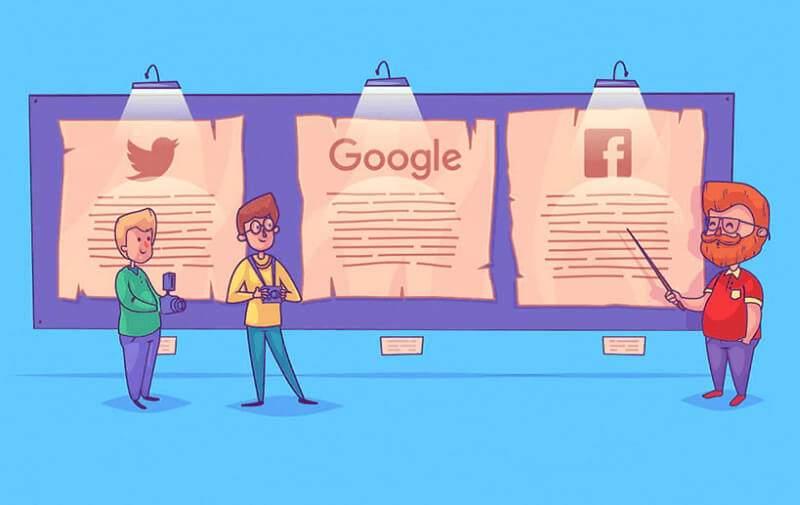Entrepreneurs, digital marketers, and small business owners spend an average of $600 billion every year on advertising, but a surprisingly small percentage of that is spent on actually converting viewers into sales. In fact, 52% of marketers spend 5% or less of their total marketing budget on conversion and user experience. While in some cases, this lack of a budget is a conscious decision, for many, it is just a simple oversight, but it is an oversight that costs money.
User experience, often abbreviated to UX, is the process of designing a visitor’s experience on the page so that as much of their visit is planned out before they ever visit your website. It is also about creating the experience to ensure that every element of the page, from the size of the buttons to the images and the emotions evoked by colors, is positive. User experience allows you to control the visitor experience so that they have a positive one and are more likely to make a purchase, and it is incredibly important for you to consider as a primary focus for your website, e-commerce shop, or blog.
User Experience Improves Your Website
Consciously designing a website around the people who visit it, the devices they use, and their age and preferences can help you to improve the site’s performance. For example, after noticing that a large percentage of their readers were on mobile devices, Time magazine switched to infinite scrolling on their home page and decreased their bounce rate by 15%. Designing a site around your visitors and their needs will positively impact the time they spend on it. Consumers spend more time on sites that meet their needs and on sites that require a minimum amount of interaction from them to find new content. It will even be better when businesses listen to their users by integrating all customer conversations and data in real-time, optimizing user experience across multiple channels.
Users Leave Sites They Do Not Like
Econsultancy found that 88% of consumers are unlikely to return to a website after a bad experience. What qualifies as a bad experience? Slow loading websites, difficult to navigate menus, and pages that do not resize based on the device are all among the worst offenders. In fact, 73% of mobile users told Kissmetrics that they had encountered websites that were too slow, and in that same study, 43% of mobile users stated that they would abandon a site if it takes more than 3 seconds to load.
In another study, users were found to leave if their website took even 250 milliseconds to load. Adobe found that 39% will stop reading something and will abandon the site if pictures do not load. How badly do you think slow loading speeds affected businesses?
Econsultancy estimates that it cost businesses some $2.6 billion in revenue in 2015. While loading times are just one of the many pain points experienced by website users, this data clearly shows that users will leave if they are unhappy with the site. By controlling the experience to ensure that the site loads quickly, the page is designed for the device, and that everything is easy to find, businesses can improve the user experience and drive more traffic.

People Spend More Money On Sites They Like
User Experience involves using persuasion triggers to help consumers decide to make a purchase, but one of the most important of those triggers is happiness. Visitors are more likely to make a purchase when they have a good experience. For example, ESPN used a customer survey to decide on changes to their homepage, and saw a 35% increase in revenue after going through with the changes. By tailoring your site to the needs of your users, you can substantially increase the value of the site, and therefore the willingness of your consumers to make purchases. User Experience can also help you to make sales in other ways by improving Call-To-Action (CTA) buttons, making it easier to find information, and by guiding the visitor down the page to the information or purchase button they need.
Visitors Create Brand Impressions Instantly
Users judge your website from the second it loads, and most of them use aesthetic and design to determine if your site is credible and trustworthy. While eye tracking plays a large part in this, 75% of consumers use their first impression of the aesthetic of the site to decide whether or not the business is credible. An additional 94% judge the website almost entirely based on design. Adobe found that when given 15 minutes to read something, two-thirds of test subjects opted to read something beautifully designed rather than something plain. Design and aesthetic are incredibly important, and your user experience should include them. If you ignore this fact, your website visitors might be leaving more quickly than you would like. However, after judging that your site is trustworthy using design impressions, an average of 64% of visitors will look for contact information, your products, or your ‘About Us’ page to confirm that impression.

Mobile Users Expect Mobile Optimization
More than 60% of all web traffic is now mobile, and that means your site has to be optimized for mobile users. Google states that a bad mobile experience makes them more likely to avoid engaging the company. Mobile users are also 5x as likely to abandon a task (such as a shopping cart checkout) if a site is not optimized for mobile, and that 48% feel frustrated and annoyed when sites are not optimized for mobile. At the same time, mobile users make up more than 60% of all local searches intent on a purchase, with over 70% of mobile users look up products while in a store or before visiting a brick and mortar shop, and many conduct product research on their phone. For B2B businesses, this is even more crucial, because Google highlights that small business owners spend their free time looking up services and solutions on their phones. If you are not designing your mobile experience, you will be losing half or more of that traffic.
In a Nutshell
User experience is about designing your website for the user, so that they can easily navigate, use, and load your pages. It is also about ensuring that the content on the pages is optimized to guide users where they want to go, ensure that the user trusts the site or the brand, and communicating the right information to the visitor. While traditional design is all about aesthetic, that is no longer enough. Today’s customers are service centric, and they want to do business with companies that care about them.
Integrating user experience into your design is the perfect opportunity to communicate that to your consumers while improving their website experience, and hopefully boosting sales and conversion.





